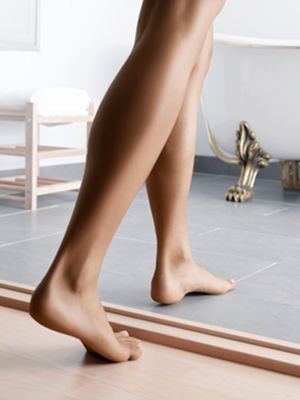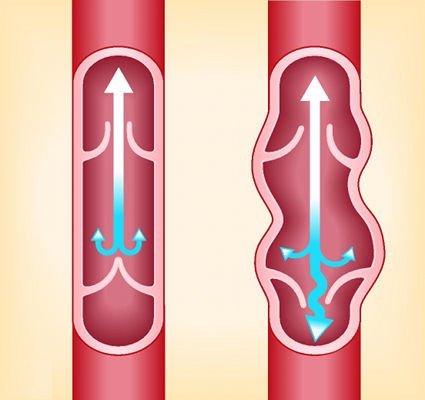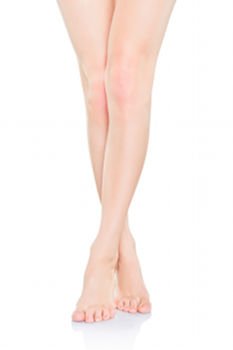Severe varicose veins do not clear on their own and tend to become chronic. Oedema, pigmentation and even venous ulcers are some of the complications derived from severe varicose veins. The latest advances in Endovenous Laser treatment have made it possible to treat severe varicose veins in an outpatient procedure, performed under local anaesthetic with a much faster recovery period than with other methods.

Endovascular Laser for varicose vein-free legs
Venous insufficiency is one of the most common conditions consulted in our Phlebology Unit. Symptoms such as fatigue, pain, oedema or swelling are common in a number of patients. Severe varicose vein complications range from trophic skin disorders to venous ulcer.
Until the late 90s, saphenous trunk incompetence was treated using traditional surgery of ligation and/or stripping (removal). The drawback of this traditional method was the need for general anaesthetic and the major discomfort involved, including bruising and long prolonged postoperative period.
There is now an alternative to traditional surgery: Endovenous Laser is a technique aimed at eliminating the reflux points, that is, the area where the venous valve fails and causes inverse blood flow, as well as extraction, fibrosis by laser or obliteration of the distal veins dilated as a result of reflux.

Venous valve failure causes an inverse flow of blood or reflux
Consists of inserting an optical fibre into the venous light, a mechanism of action that causes retraction and welding of the vein; destroying it and making it impossible for the blood to flow through it.
Photodynamic Therapy of varicose veins is an IML patented treatment that has received international recognition in the major Phlebology medical journals, such as Phlebology or Lasers in Medical Science.
.Functional outcomes that offers the Photodynamic Therapy of varicosities in the treatment of varicose veins is serious very satisfactory, although the aesthetic result takes more time to occur.
With the goal of achieving greater patient satisfaction, at IML we have incorporated the CoolTouch Endovenous technology equipment, a device that achieves functional and aesthetic results in just one week.
IML has become a Medical Centre able to resolve the different types of varicose veins in a highly efficient and safe way; using the optimal therapeutic alternative for each case.
At IML, we apply Endovenous Laser in the following cases:
Endovenous Laser treatment requires a patient medical history and physical examination where the Angiology and Phlebology specialist assesses the suitability of the treatment, based on prior venous procedures, family history, etc.
The diagnosis is performed using an ultrasound examination (Echo Doppler), which will map out the incompetent veins and other varicose vein focal points.
The procedure has duration of less than one hour and is closely monitored by ultrasound.
A local Klein type anaesthetic is applied along the trajectory of the laser fibre.
The fibre is inserted through a tiny puncture, similar to an intramuscular needle, into the affected vein and is guided through the venous trajectory to the reflux point. This point is usually in the groin, on the union of the great saphenous with the femoral vein.
Once the fibre is positioned, the laser begins to act while the fibre is gradually removed. The laser generates retraction and welding of the vein on the inside as it moves along, so it is converted into a fibrous cord that is reabsorbed by the body in 2 or 3 months. The entire procedure is guided by high quality ultrasound in real-time.
When the fibre has been collected in its entirety, the vein has been completely treated and the procedure is complete.
The patient must use 280 DEN stockings for 1 week continuously and walk at least 30 minutes a day.
Endovenous Laser offers many advantages over traditional surgery:

There are some cases where our medical experts can recommend complementary therapies or other therapeutic alternatives, depending on the characteristics of each patient.
For further information on the treatment of thick varicose veins with Endovenous Laser, request a free informative consultation with one of our medical experts.